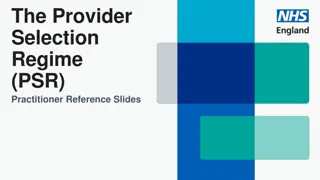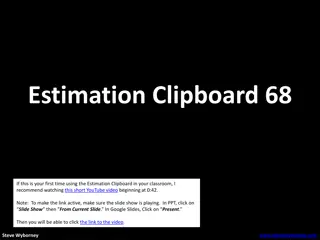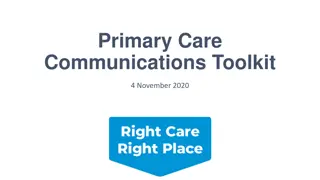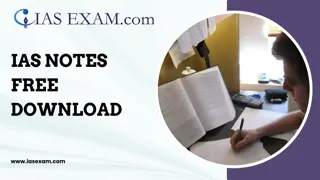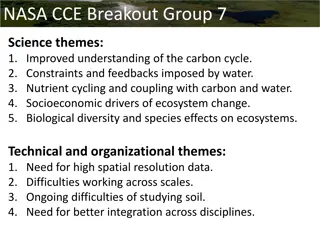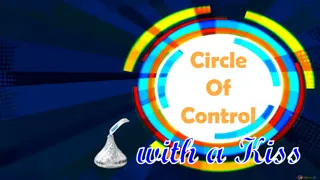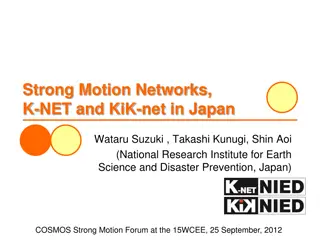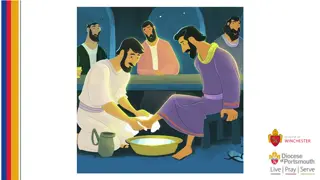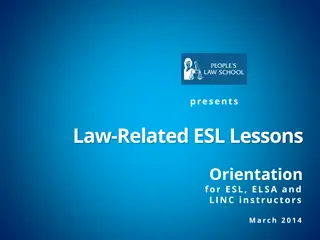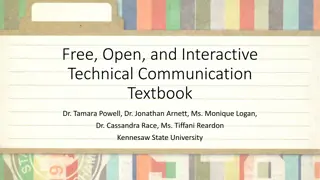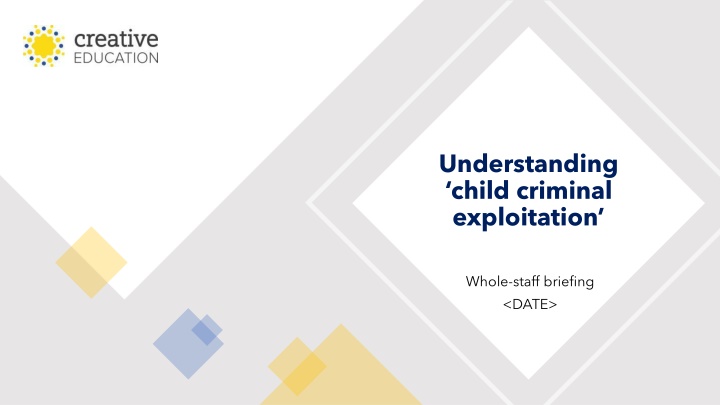
Recognizing and Addressing Child Criminal Exploitation: A Comprehensive Overview
Learn about the definition, vulnerabilities, signs, and discussion points related to child criminal exploitation. Discover where to find additional information and explore how to start crucial conversations to safeguard children from exploitation.
Download Presentation

Please find below an Image/Link to download the presentation.
The content on the website is provided AS IS for your information and personal use only. It may not be sold, licensed, or shared on other websites without obtaining consent from the author. If you encounter any issues during the download, it is possible that the publisher has removed the file from their server.
You are allowed to download the files provided on this website for personal or commercial use, subject to the condition that they are used lawfully. All files are the property of their respective owners.
The content on the website is provided AS IS for your information and personal use only. It may not be sold, licensed, or shared on other websites without obtaining consent from the author.
E N D
Presentation Transcript
Understanding child criminal exploitation Whole-staff briefing <DATE>
Where can you find out more information about child criminal exploitation? Keeping Children Safe in Education (2020) Working Together to Safeguard Children (2018) Criminal Exploitation of children and vulnerable adults: County Lines guidance
Definition of Child Criminal Exploitation CCE is where an individual or group takes advantage of an imbalance of power to coerce, control, manipulate or deceive a child into any criminal activity (a) in exchange for something the victim needs or wants, and/or (b) for the financial or other advantage of the perpetrator or facilitator and/or (c) through violence or the threat of violence. The victim may have been criminally exploited even if the activity appears consensual. CCE does not always involve physical contact; it can also occur through the use of technology. CCE can include children being forced to work in cannabis factories, being coerced into moving drugs or money across the country, forced to shoplift or pickpocket, or to threaten other young people. Keeping Children Safe in Education
What makes a child more vulnerable? Having prior experience of neglect, physical and/or sexual abuse. Lack of a safe/stable home environment, now or in the past (domestic violence or parental substance misuse, mental health issues or criminality, for example). Social isolation or social difficulties. Economic vulnerability. Homelessness or insecure accommodation status. Connections with other people involved in gangs. Having a physical or learning disability. Having mental health or substance misuse issues. Being in care (particularly those in residential care and those with interrupted care histories). Being excluded from mainstream education, in particular attending a Pupil Referral Unit.
What are the signs and symptoms? Persistently going missing from school or home and / or being found out-of-area. Unexplained acquisition of money, clothes, or mobile phones. Excessive receipt of texts / phone calls and/or having multiple handsets. Relationships with controlling / older individuals or groups. Leaving home / care without explanation. Suspicion of physical assault / unexplained injuries. Parental concerns. Carrying weapons. Significant decline in school results / performance. Gang association or isolation from peers or social networks. Self-harm or significant changes in emotional well-being.
Discussion Points Discuss the following questions with the person next to you. What are the barriers that prevent young people from disclosing child criminal exploitation? What role do you play in identifying CCE? What things might you hear a child say that could indicate that they are being criminally exploited?
Our school arrangements for raising concerns Insert details here about how to raise concerns about children and how to record concerns (e.g. CPOMS).
Summary Everyone is responsible for safeguarding and we all have a responsibility to identify children who may be experiencing child criminal exploitation. You can play your part in this by knowing children well, providing a safe environment for them to learn and flourish in and by referring any concerns to the DSL. Any concerns about children should be raised with (insert details here). This includes anything that you think may make a child more vulnerable to abuse such as CCE.


